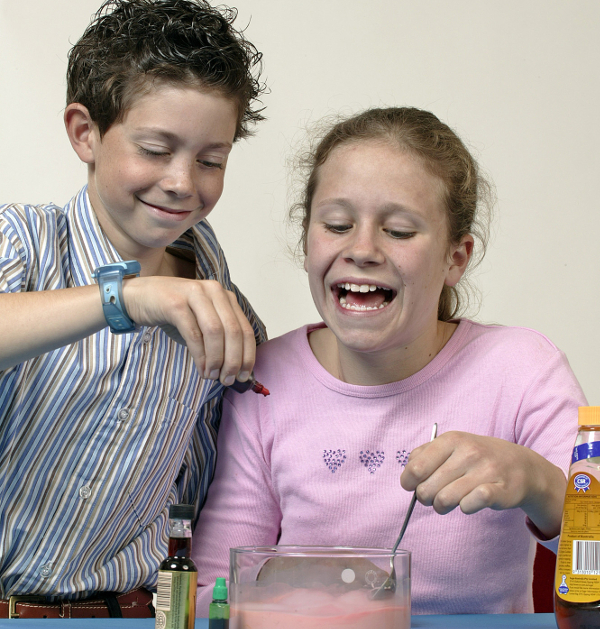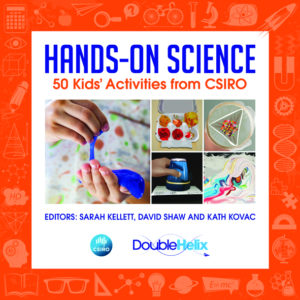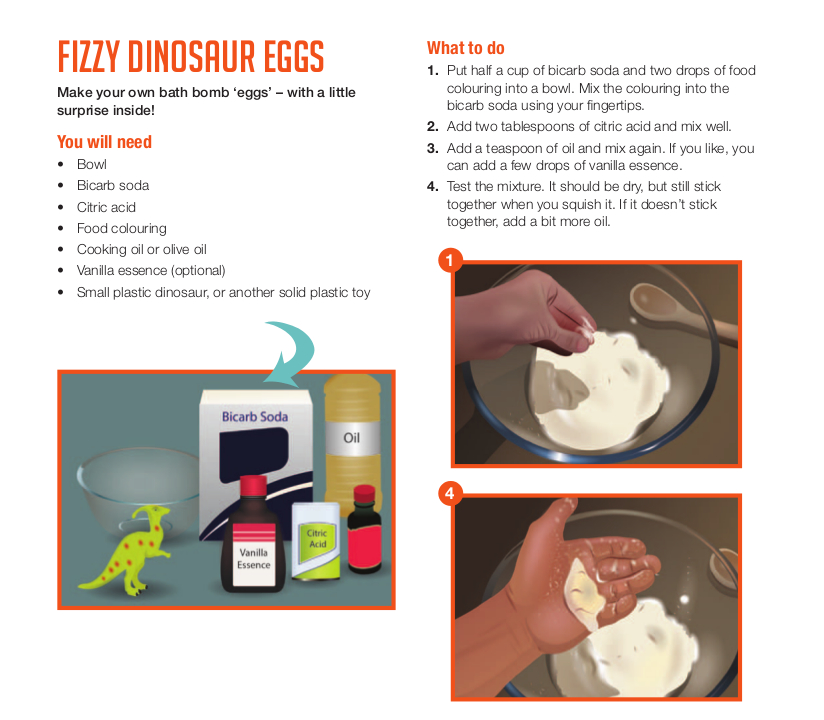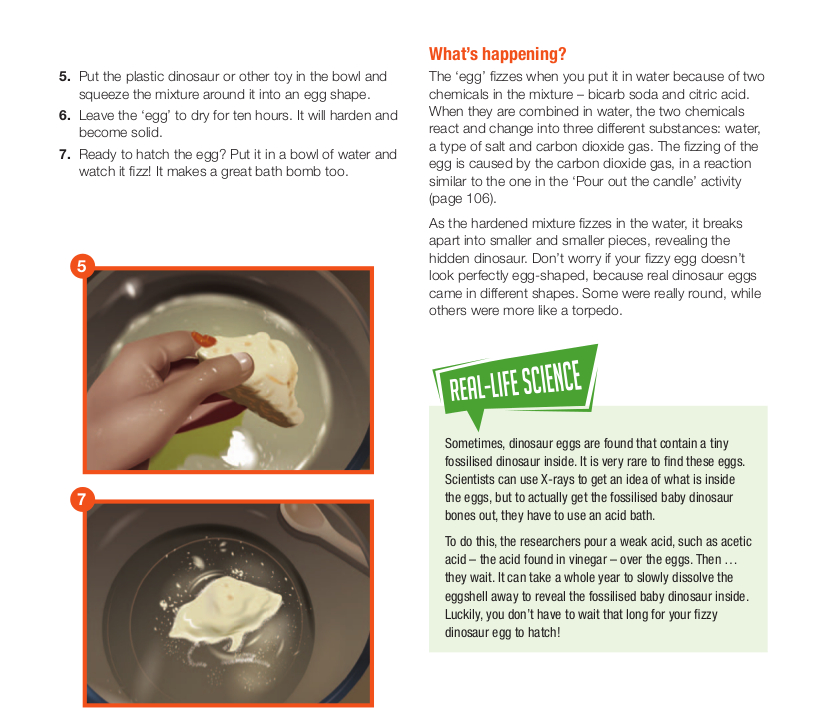Discover more about the world of science with our fun DIY science activities, using easy-to-find, everyday materials from your own home.

Discover more about the world of science with fun DIY science activities using easy-to-find, everyday materials.
Did you ever wonder why some insects can walk on water? Or how the ancient Egyptians made mummies? Are you curious about why a guitar sounds different from a flute? Gather some everyday materials from around your home and find out the answers with 50 kid-approved science activities in our latest book.
You may have heard about Double Helix, our awesome science magazine for kids. It has lots of great articles about the latest science news, as well as puzzles and hands-on experiments you can do at home.
 We’ve been bringing science to life for kids for 30 years – ever since the beginnings of the Double Helix Science Club back in 1986. Since that time, we’ve grown and changed a lot. But we’ve always kept bringing you interesting experiments that help make science fun and easy to understand.
We’ve been bringing science to life for kids for 30 years – ever since the beginnings of the Double Helix Science Club back in 1986. Since that time, we’ve grown and changed a lot. But we’ve always kept bringing you interesting experiments that help make science fun and easy to understand.
Naturally our fabulous Double Helix editors try these experiments out before we put them in the magazine. And we also get feedback from our readers on the activities they liked the best.
So we’ve chosen the top 50 favourite experiments and packed them into a book so you can discover more about the world of science using easy-to-find, everyday materials. Activities like making: dancing slime, rubbery bones, a ping pong ball shooter, ghastly ghostly photos, fizzy dinosaur eggs and a lemon battery.
The activities cover electricity and magnetism, sound and light, heat and motion, water and gases, living things, shapes and planet Earth. Each activity has a simple list of materials required, and uses step-by-step instructions and drawings so kids can create exciting and interesting reactions, experiments and inventions.
Each activity is set out like a recipe, with a list of things you need followed by step-by-step instructions and drawings. Almost all the activities only need common equipment and ingredients that you will likely find lying around in your kitchen or craft cupboard already.
Fast facts and quiz questions will help you test your knowledge, and you’ll also find an explanation of the science behind each activity, along with examples of how each principle works in the real world.
Try your hand at this science activity


Pick up your copy of Hands-on Science today at our Publishing bookstore!


9th March 2018 at 1:36 pm
But I found the answers here:
Still help – it is good when the answers are in the email! 🙂
9th March 2018 at 1:31 pm
Your quiz questions in email do not click though to the blog answers 🙁
Firefox says: Your search – https://csiro.us4.list-manage.com/track/click?u=6ae8427d1f6f3b8d6da57d629&id … – did not match any documents. Help please.